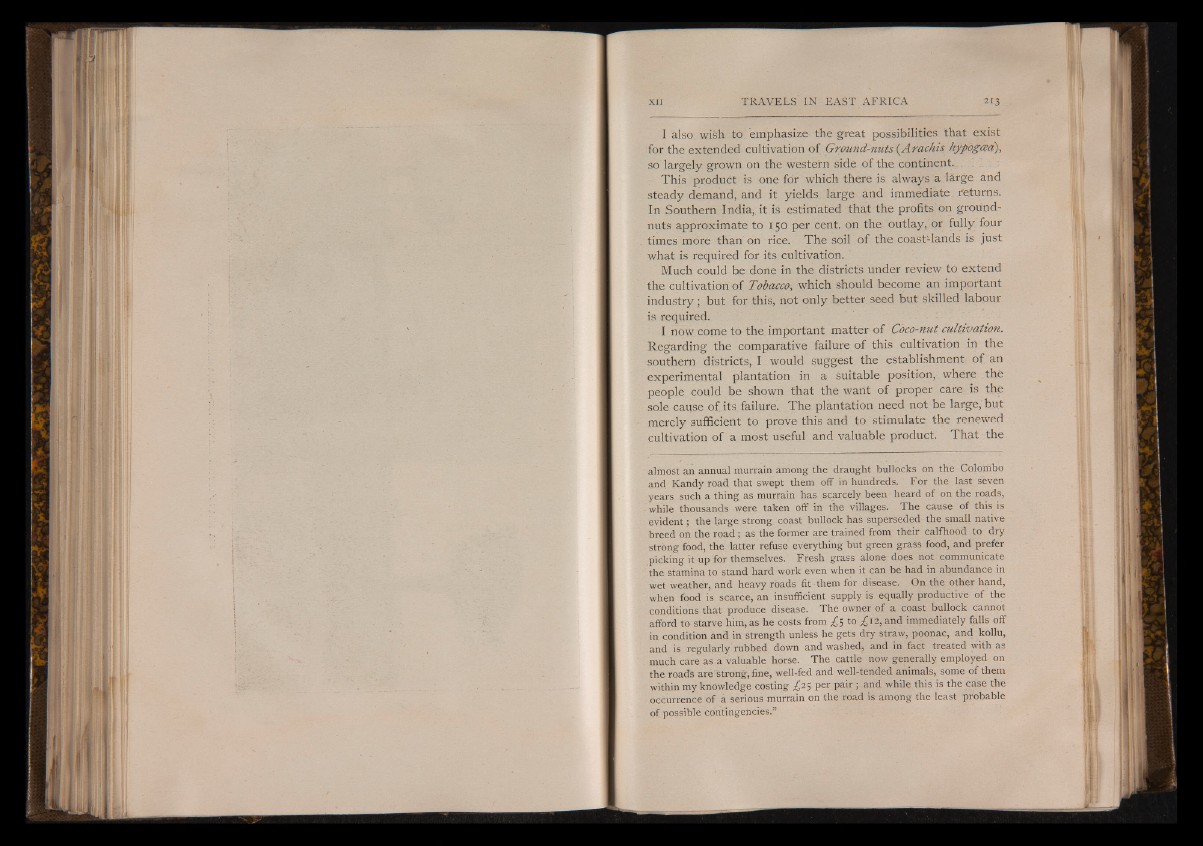
i n
¡1
I | ||H i 1
1 i f IE Ifl 1
W
I also, wish to emphasize the great possibilities that exist
for the extended cultivation of Ground-nuts (Arachis hypogceci),
so largely grown on the western side of the continent.
This product is one for which there is always a large and
steady demand, and it yields large and immediate returns.
In Southern India, it is estimated that the profits on groundnuts
approximate to 150 per cent, on the outlay, or fully four
times mòre than on rice. The soil of the coast-lands is just
what is required for its cultivation.
Much could be done in the districts under review to extend
the cultivation of Tobacco, which should become an important
industry ; but for this, not only better seed but skilled labour
is required.
I now come to the important matter of Coco-nut cultivation.
Regarding the comparative failure of this cultivation in the
southern districts, I would suggest the establishment of an
experimental plantation in a suitable position, where thè
people could be shown that the want of proper care is the
sole cause of its failure. The plantation need not be large," but
merely sufficient to prove this and to stimulate the renewed
cultivation of a most useful and valuable product. That the
almost an annual murrain among the draught bullocks on the Colombo
and Kandy road that swept them off in hundreds. For the last seven
years such a thing as murrain has scarcely been heard of on the roads,
while thousands were taken off in the villages. The cause of this is
evident; the large strong coast bullock has superseded-the small native
breed on the road ; as the former are trained from their calfhood to dry
strong food, the latter refuse everything but green grass food, and prefer
picking it up for themselves. Fresh grass, alone does not communicate
the stamina to stand hard work even when it can be had in abundance in
wet weather, and heavy roads fit them for disease. On the other hand,
when food is scarce, an insufficient supply is equally productive of the
conditions that produce disease. The owner of a coast bullock cannot
afford to starve him, as he costs from ¿ 5 to ¿ 12 , and immediately falls off
in condition and in strength unless he gets dry straw, poonac, and kollu,
and is regularly rubbed down and washed, and in fact treated with as
much care as a valuable horse. The cattle now generally employed on
the roads are strong, fine, well-fed and well-tended animals, some of them
within my knowledge costing ,£25 per pair ; and while this is the case the
occurrence of a serious murrain on the road is among the least probable
of possible contingencies.”